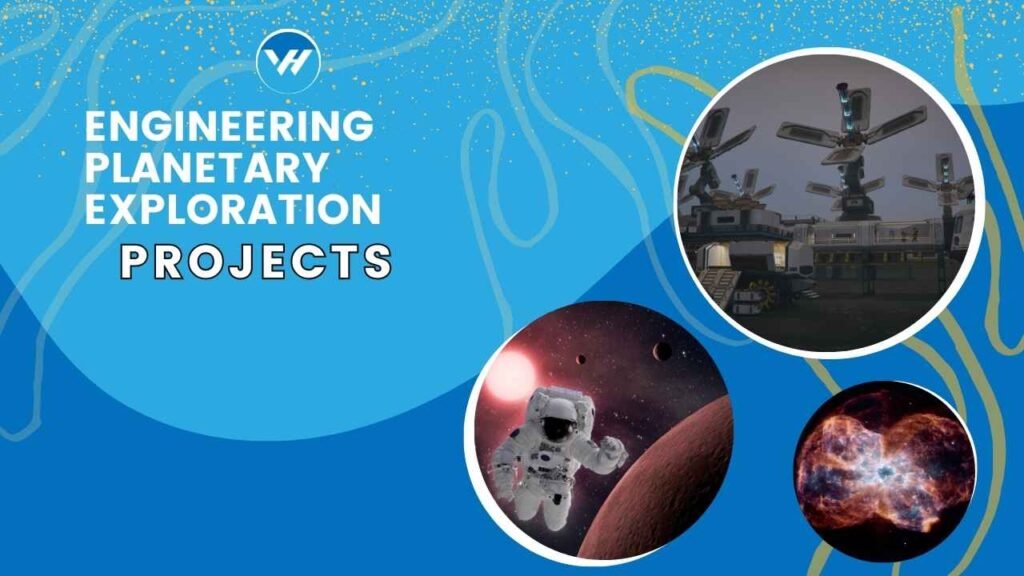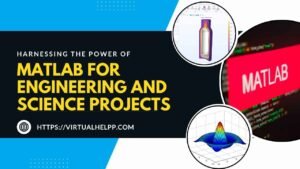Planetary exploration is like humanity’s ultimate road trip, but instead of hopping into a car, we’re sending sophisticated robots and spacecraft to distant worlds. The excitement of discovering new landscapes, finding potential signs of life, and understanding our place in the universe drives these missions. But none of this would be possible without the brilliant minds of engineers who design, build, and operate the technology that makes planetary exploration a reality.

Table of Contents
ToggleHistory of Planetary Exploration
Planetary exploration has come a long way since the first tentative steps taken in the mid-20th century. Early missions like the Soviet Union’s Luna 2, which impacted the Moon in 1959, and NASA’s Mariner 2, which flew by Venus in 1962, paved the way for more ambitious endeavors. These missions demonstrated that we could send spacecraft beyond Earth and gather valuable scientific data.
As technology advanced, so did our ability to explore farther and with greater precision. The 1970s saw the launch of the Viking missions, the first successful Mars landers, and the Voyager probes, which have since traveled beyond our solar system, sending back unprecedented data about the outer planets and their moons.
The Role of Engineering in Planetary Exploration
Engineering is the backbone of planetary exploration. It involves the meticulous design and development of spacecraft that can withstand the rigors of space travel and operate in environments far different from Earth. Engineers create robust systems for propulsion, navigation, communication, and scientific measurement. Robotics and automation also play a crucial role, enabling spacecraft to perform complex tasks autonomously millions of miles away from Earth.
Types of Planetary Exploration Missions
Flyby Missions: These missions involve spacecraft flying past a celestial body to gather data and images. They are often used for initial reconnaissance. An example is the New Horizons mission to Pluto.
Orbiter Missions: Spacecraft are placed in orbit around a planet or moon to conduct prolonged studies. The Mars Reconnaissance Orbiter has been studying Mars since 2006, providing detailed maps of the surface.
Lander Missions: These missions involve landing on the surface of a planet or moon to conduct experiments and gather samples. The Viking landers on Mars were pioneers in this category.
Rover Missions: Rovers are mobile landers that can travel across the surface of a planet or moon, conducting experiments and sending back high-resolution images. The Mars rovers, such as Curiosity, are iconic examples.
Engineering Challenges in Planetary Exploration
Exploring other planets is no walk in the park. Engineers face numerous challenges, including:
Harsh Environmental Conditions: Spacecraft must endure extreme temperatures, radiation, and dust storms. Designing systems that can survive and operate in these conditions is a major engineering feat.
Communication Delays: Due to the vast distances, there can be significant delays in communication between Earth and the spacecraft. Engineers must design systems that can operate autonomously and handle unforeseen issues.
Power Generation and Storage: Solar power is often the go-to source for energy, but it can be limited or unavailable in some environments. Engineers have to create efficient power systems, sometimes incorporating nuclear energy.
Innovative Technologies in Planetary Exploration
The quest to explore the cosmos has driven incredible technological advancements:
Advanced Propulsion Systems: New propulsion technologies, such as ion thrusters, allow spacecraft to travel farther and faster.
Autonomous Navigation: AI and machine learning enable spacecraft to navigate and make decisions independently, critical for missions where real-time human intervention isn’t possible.
In-situ Resource Utilization (ISRU): This technology focuses on using local resources, such as extracting water from Martian soil, to support long-term missions and potentially human colonization.
Prominent Planetary Exploration Projects
Several missions stand out for their engineering marvels and scientific contributions:
Mars Exploration Rover (MER) Program: Including the rovers Spirit and Opportunity, this program demonstrated that solar-powered rovers could traverse and study Mars’ surface for years beyond their expected lifespans.
Voyager Missions: Launched in 1977, the Voyager 1 and 2 probes provided unprecedented data about the outer planets and are now in interstellar space, continuing to send back information.
New Horizons Mission: This mission gave us the first close-up images of Pluto and its moons, revealing a surprisingly complex world.
The Mars Rovers: Spirit, Opportunity, Curiosity, and Perseverance
The Mars rovers are the rock stars of planetary exploration:
Spirit and Opportunity: Launched in 2003, these twin rovers exceeded all expectations, with Opportunity lasting nearly 15 years. They discovered evidence of past water activity on Mars.
Curiosity: Landing in 2012, Curiosity is a car-sized rover equipped with a suite of scientific instruments. It has provided invaluable data about Mars’ habitability and geology.
Perseverance: The latest rover, Perseverance, landed in 2021. It carries advanced tools to search for signs of past life and collect samples for future return to Earth.
Future Planetary Exploration Projects
The future of planetary exploration is bright and ambitious:
Mars Sample Return Mission: This mission aims to bring Martian soil and rock samples back to Earth for detailed analysis, providing direct evidence of Mars’ past.
Europa Clipper Mission: Scheduled for the 2020s, this mission will explore Jupiter’s moon Europa, which may harbor a subsurface ocean and potentially life.
Artemis Program: NASA’s Artemis program aims to return humans to the Moon and establish a sustainable presence by the end of this decade, serving as a stepping stone for future Mars missions.
Collaborative Efforts in Planetary Exploration
Planetary exploration is a global endeavor, with many nations and private companies contributing:
International Partnerships: Agencies like NASA, ESA (European Space Agency), and Roscosmos (Russian Space Agency) often collaborate on missions, sharing expertise and resources.
Private Companies: Companies like SpaceX and Blue Origin are developing new technologies and launching capabilities, significantly reducing costs and expanding possibilities for exploration.
Engineering Education and Careers in Planetary Exploration
Aspiring engineers need a strong foundation in fields such as aerospace, robotics, and computer science:
Required Skills and Qualifications: A degree in engineering or related fields, along with skills in problem-solving, teamwork, and creativity, are essential.
Notable Educational Programs and Institutions: Institutions like MIT, Caltech, and Stanford offer top-notch programs in aerospace engineering and space sciences.
Virtual Help for Engineering Students
Overview of Virtual Help Platform: Virtual Help is a revolutionary platform that connects students with tutors and assignment help through an easy-to-use app available on iOS and Android.
How Virtual Help Can Assist with Engineering Assignments and Projects: Whether you’re stuck on a tough problem or need guidance on a project, Virtual Help provides access to experts who can offer personalized assistance and support.
Impact of Planetary Exploration on Earth
Exploring other planets has numerous benefits for life on Earth:
Technological Spin-offs: Many technologies developed for space missions have practical applications on Earth, such as advancements in materials science and telecommunications.
Inspiration for Future Generations: Planetary exploration fuels curiosity and inspires young people to pursue careers in science, technology, engineering, and mathematics (STEM).
Ethical Considerations in Planetary Exploration
As we explore other worlds, we must do so responsibly:
Planetary Protection Protocols: These protocols aim to prevent contamination of other planets with Earth microbes and vice versa, ensuring the integrity of scientific research.
Environmental Impact on Celestial Bodies: Engineers and scientists must consider the potential impact of our activities on other planets and work to minimize any adverse effects.
Conclusion
Engineering planetary exploration projects is a monumental task that pushes the boundaries of technology and human ingenuity. These missions not only expand our knowledge of the universe but also inspire and drive technological advancements that benefit us here on Earth. As we look to the future, the prospects for planetary exploration are incredibly exciting, with new missions on the horizon that promise to unveil even more of the mysteries of our solar system and beyond.
FAQs
What is the primary goal of planetary exploration?
The primary goal of planetary exploration is to gather scientific data about celestial bodies, understand their formation and evolution, and search for signs of life.
How do engineers overcome the communication delays in space missions?
Engineers design autonomous systems that allow spacecraft to operate independently and make decisions without real-time input from Earth, mitigating the impact of communication delays.
What are some of the key challenges faced by planetary exploration missions?
Key challenges include harsh environmental conditions, communication delays, power generation and storage, and ensuring the spacecraft’s longevity and reliability.
How can students get involved in planetary exploration projects?
Students can get involved by pursuing degrees in relevant fields, participating in internships and research projects, and utilizing platforms like Virtual Help for additional support and guidance.
What role does Virtual Help play in supporting engineering students?
Virtual Help connects engineering students with expert tutors and resources to assist with assignments and projects, offering personalized guidance and support through its iOS and Android app.





